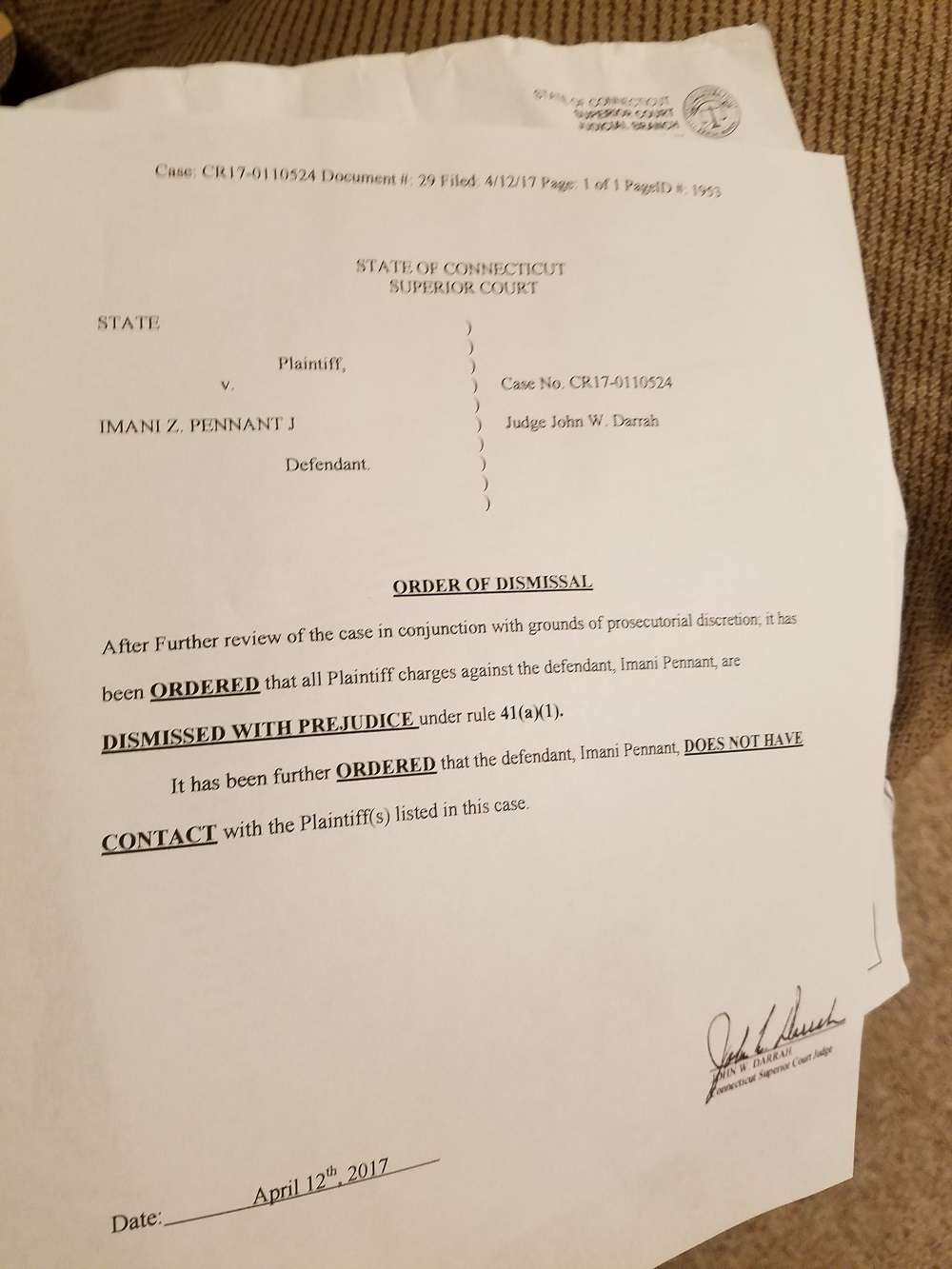The Volokh Conspiracy
Mostly law professors | Sometimes contrarian | Often libertarian | Always independent
One-Year Sentence for Forgery of Court Order, Aimed at Getting Patch.com Article Altered or Deindexed
... though the defendant's other crimes likely affected the sentence.
The Manchester, Conn. Journal-Inquirer (Matthew P. Knox) reports that Imani Pennant (a former UConn student) has been sentenced to one year in prison for forgery, assault, and trespass. At first, he was routed to a diversionary program "for defendants with a psychiatric disability," and "all of the charges against him could have been erased" had he completed the program successfully. But he was ejected from the program for violating a protective order, and therefore sentenced on the original charges.
Pennant had forged an order that purported to dismiss the assault and trespass charges against him, and tried to use it to get Patch.com to remove an article about those charges (and to get Google to deindex the article). Here's the forged order:
And here's an excerpt from the police report:
14) … Pennant provided both verbal and written statements regarding the document at issue in this case. In these statements Pennant provided the following: that after his arrest in March by UConn Police, he noticed an article online at the Patch.com about the incident; that his friends saw the article as well; that he felt the article was an unfair portrayal of the incident; that he wanted the article removed or changed; that in order to do this he went online to a web site and generated a fake court document with his personal details inserted; that he printed the document, took a picture of the document with his Samsung Galaxy S7 phone, and sent it to both Google.com and the Patch.com; that he sent it to the author of the original Patch.com article so that he would remove or amend the article; that he sent it to Google.com to request that his name be removed from the search engine results that link to the Patch.com article; that he is sorry; that creating and sending this fake document was a mistake, that he meant no disrespect to the court, and that it will never happen again….
15) … [T]hese facts show lmani Pennant created and possessed a written instrument purporting to be officially issued by the Connecticut Superior Court with the intent to deceive both Google and the Patch.com. Accordingly, this Affiant requests that an arrest warrant be issued for lmani Pennant for 2 counts of Forgery in the 2nd degree.
The forged order was similar in some ways to the forgery in the Ken Haas matter (also coming out of Connecticut), though no charges have been filed in that case. Many thanks to the Lumen Database for invaluable research help.
Editor's Note: We invite comments and request that they be civil and on-topic. We do not moderate or assume any responsibility for comments, which are owned by the readers who post them. Comments do not represent the views of Reason.com or Reason Foundation. We reserve the right to delete any comment for any reason at any time. Comments may only be edited within 5 minutes of posting. Report abuses.
Please to post comments



Forging a court document only works if nobody threatened with it ever checks with the clerk of the court to see if it's real. And that, in turn, relies on the targets to not know how court orders are generated. That seems like a fairly big risk to take for fairly little reward. It's like making counterfeit pennies.
Well the guy who made really shitty counterfeit $1 bills was never arrested, though he also didn't make money off the scheme.
I wonder what he copied the forged order from -- particularly the part that orders him not to have further contact with...the State of Connecticut?
What do you have to do to make a reasonable state fear for its safety?
You're reading it even more charitably than it deserves. It states that he doesn't have contact with the state, not just that he's not supposed to bother it anymore. That he even has the letter, however, suggests that he does in fact have contact with it.
This dude is dumb. Was it too hard to remove "Plaintiff(s)" and just leave "Plaintiff", at the very minimum?
Is the first link incorrect? It is from January 2018 and I believe it makes no reference to a diversion program. There is also no sentence, only a statement that the defendant posted bond.
Whoops, fixed!
I wonder how many forged court orders of any type actually take effect without being challenged as forgeries.
It doesn't take much sophistication to spot this kind of inept forgery.
The more consequential and substantial the target of the intended deception, the more likely that target is — or so one at least hopes! — to avoid being fooled.
One hopes, for instance, that the major search engine companies — Google, of course, but also Bing.com, DuckDuckGo.com, Yahoo.com, etc. — actually cross-check with courts and court records before agreeing to honor a de-indexing "take-down" request.
As more and more state-court systems move to continuous real-time (or near real-time) online access to court documents — in the fashion that PACER now provides nationally for court documents in the trial and appellate federal court system — it will become easier for the targets of such deception to protect themselves.
I suppose a truly knowledgeable and gifted forger could duplicate the characteristic PACER header on filed documents, for instance, and set up a spoof website with appropriate links leading to an online copy of the forgery that might appear, to a casual user, to be properly hosted by PACER. But that would require a far brighter sort of criminal than this mullet.